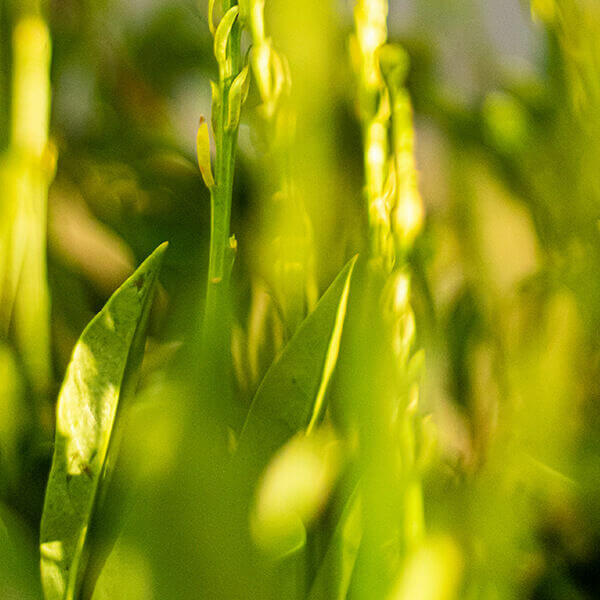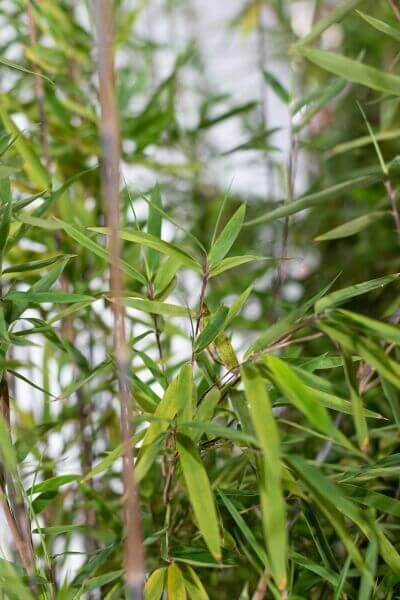Hedge Plants For Foliage Interest
Hedge Plants For Foliage Interest
Blog Article
Compact Hedge Plants For Urban Gardens
Enhance your garden's appeal with lush hedge ranges such as Yew (Taxus), Thuja, Laurel, Photinia, and Bamboo, commemorated for their structural integrity and ecological benefits.
Yew and Thuja offer evergreen coverage and winter resilience, while Laurel provides rapid growth and broad, aromatic leaves.
Photinia adds seasonal beauty with its vibrant red foliage, and Bamboo provides a low-maintenance, peaceful atmosphere.
These hedges improve air quality, minimize sound, and create tranquil, personal areas.
Proper planting, spacing, and upkeep make sure vigorous growth and eco-friendly harmony.
Explore how these rich ranges can raise your garden's beauty and well-being.
Secret Takeaways
Change Your Garden With Lush Hedge Ranges
- Select Yew for its thick, evergreen growth and unrivaled durability.
- Opt for Laurel for its fast growth and broad leaves, guaranteeing fast personal privacy.
- Pick Photinia for its lively seasonal foliage, which turns a striking dark red.
- Utilize Bamboo for a low-maintenance, winter-hardy hedge with aesthetic appeal.
- Space plants 2-3 per meter and prune regularly for ideal growth and health.
Popular Hedge Plants
When transforming a garden with rich hedge ranges, it's important to consider popular hedge plants such as Yew, Thuja, Laurel, and Photinia due to their unique characteristics and benefits.
Yew (Taxus) is highly respected for its durability and thick, green development, making it a prime option for withstanding landscapes.
Thuja is kept in mind for its evergreen foliage and robust winter season durability.
Photinia adds seasonal vibrancy with red leaves that darken over time, creating dynamic visual appeal.
Laurel uses quick development and fragrant, broad leaves, suitable for quick personal privacy.
In Addition, Bamboo is an exceptional choice for ambiance, offering a low-maintenance, winter-hardy alternative that boosts the garden's visual with its sophisticated, swaying walking sticks.
These selections cater to a range of horticultural requirements and preferences.
Advantages of Garden Hedges
Garden hedges provide a wide variety of benefits, making them an important addition to any landscape. These natural barriers are economical to implement and supply considerable wind protection, boosting air circulation and adding to noise decrease. The dense foliage of hedges like Thuja and Beech makes sure privacy by blocking visibility, creating a remote and serene environment.
Hedges also play a vital role in microclimate regulation, offering a stable environment that fosters plant growth and reduces temperature level changes. Their intricate leaf structures filter toxins, improving air quality and adding to a healthier garden community.
Additionally, hedges excel in sound decrease, absorbing and deflecting acoustic waves to lower ambient sound levels. This dual functionality of offering both visual and acoustic privacy boosts the overall tranquility and aesthetic appeal of any garden.
Planting and Upkeep Tips
For an effective hedge, careful preparation of the planting area is important. Ensure the soil has proper pH and drainage to support strong root advancement.
Area the plants properly for the chosen species. Water the hedge frequently throughout its preliminary growth phase, adjusting as needed with seasonal changes.
Implement a systematic pest control and disease avoidance strategy, using organic or chemical treatments when necessary. Regularly inspect for aphids, mites, and fungal infections.
Apply mulch to maintain moisture and suppress weeds. Seasonal pruning promotes dense growth and air circulation, vital for plant health.
Following these guidelines will assist you cultivate a vibrant, well-maintained hedge that boosts the appeal of your garden.
Spacing and Cutting Guidelines
Spacing and Trimming Standards
Correct spacing and trimming are essential for cultivating healthy, visually appealing hedges. Appropriate spacing guarantees each plant receives sufficient nutrients, light, and air flow.
Follow these guidelines for optimum hedge upkeep:
- Spacing: Position hedge plants 2-3 plants per meter to encourage robust growth.
- Pruning Strategies: Regular pruning is essential for keeping preferred hedge height and shape. Trim brand-new development in summertime and cut back older wood throughout winter.
- Seasonal Care: Change trimming techniques and schedules according to seasonal requirements to ensure plant health.
- Hedge Height: Frequently screen and cut to preserve the wanted hedge height and accomplish consistent aesthetic appeals.
Sticking to these steps will ensure your hedge grows, boosting both the appeal and functionality of your garden.
Choosing the Right Hedge
Selecting the Right Hedge
Selecting the get more info proper hedge involves examining factors such as fully grown height, foliage density, and environmental durability. Effective hedge plant choice requires comprehending each types' growth qualities and site-specific flexibility.
For instance, Yew (Taxus) offers outstanding durability and thick development, while Thuja is significant for its winter durability. In addition, considering maintenance requirements is vital; fast-growing types like Laurel or Privet demand regular trimming, whereas low-maintenance choices like Bamboo or Ivy may be more suitable for those looking for very little maintenance.
Environmental factors such as soil type, light accessibility, and wetness conditions need to likewise assist the choice procedure. This mindful technique makes sure the picked hedges will grow, supplying both practical and aesthetic benefits to the garden landscape.
Delivery and Planting Guidance
To ensure your hedge plants thrive, they should be provided by specialized carriers and planted immediately upon arrival.
Follow these vital steps for successful planting:
- Soil Preparation: Enrich the soil with organic matter to improve drainage and nutrient material.
- Planting Depth: Create a trench twice the width and equivalent to the depth of the root ball.
- Watering Methods: Water completely after planting, keeping the soil consistently moist but not filled.
- Mulching: Use a layer of mulch to retain moisture and suppress weeds.
Client Assistance and Service
Provided the vital function of timely assistance in horticultural pursuits, our customer support team is offered 6 days a week through telephone, e-mail, and social networks to use expert recommendations and swiftly attend to any issues. Their devotion to fast reaction times makes sure client fulfillment by solving questions connected to plant health, optimum planting approaches, and upkeep schedules.

Accessibility
-------------------
Email
This extensive assistance system, enhanced by an excellent 9.3/ 10 consumer rating, highlights our commitment to enhancing the gardening experience for every client.
Frequently Asked Questions
For How Long Does It Take for Hedge Plants to Establish?
Hedge plants typically require one to three years to become completely established, with the exact duration varying by species and growing conditions.
Effective care throughout this important duration is necessary for robust development. Constant watering, watchful weed control, and suitable fertilizer application are critical in promoting strong root development.
For example, fast-growing types like Laurel might develop quicker, while slower-growing varieties such as Yew might take longer. Thorough upkeep accelerates the establishment procedure, leading to healthy and dense hedges.
What Are the very best Hedge Plants for Privacy?
The concern of the very best hedge plants for personal privacy involves assessing evergreen and deciduous alternatives.
Evergreen hedges like Thuja, Laurel, and Cypress provide year-round coverage, guaranteeing constant personal privacy.
On the other hand, deciduous hedges such as Beech use seasonal privacy, shedding leaves in colder months.
Key maintenance suggestions for privacy hedges consist of regular trimming, fertilizing in spring, and proper spacing-- normally 2 to 3 plants per meter.
Additionally, constant watering and thorough weed removal are vital for promoting healthy, thick growth.
Can Hedge Plants Attract Wildlife to My Garden?
Yes, hedge plants can bring in wildlife to your garden by offering essential advantages like shelter, food, and nesting sites, consequently boosting regional biodiversity. Yew, holly, and laurel are outstanding for attracting birds, while ivy supports a variety of pests.
Nevertheless, it is necessary to keep in mind that there are some disadvantages, such as increased maintenance to manage pests and routine maintenance. Carefully selecting and keeping hedge ranges can help balance these disadvantages and benefits, eventually promoting a sustainable and lively community in your garden.
Are There Any Blooming Hedge Plants Available?
Yes, there are flowering hedge plants offered that can enhance the appeal of your garden.
For example, Elaeagnus, likewise referred to as Olive Willow, produces fragrant white flowers in the fall, including a touch of elegance.
Photinia, another popular option, showcases vibrant red leaves that grow into a rich green, developing a dynamic visual result throughout the seasons.
To ensure these plants grow, it's important to practice correct pruning methods and seasonal upkeep, such as trimming new development in the summertime and cutting down in the winter.
These steps will assist maintain the health and aesthetic appeal of your blooming hedges.
How Do I Avoid Pests in My Hedge Plants?
To prevent insects in hedge plants, use natural pest control techniques and keep proper hedge care. Present helpful insects like ladybugs, which take advantage of damaging pests, to create a balanced environment.
Regularly inspect your hedges for signs of invasion and quickly eliminate any afflicted parts to avoid the spread. Make sure the health of your hedges by using well balanced fertilizers and providing adequate water.
Utilize mulching to retain soil moisture and proper spacing to decrease plant stress and promote robust growth. These practices collectively help in reducing insect problems and preserving a healthy hedge.
Conclusion
In essence, selecting the right hedge varieties such as Yew, Thuja, and Laurel can transform any garden into a tranquil sanctuary. These plants supply year-round plant, improve aesthetic appeal, and offer practical advantages like sound reduction and wind security.
Proper planting techniques, precise spacing, constant watering, and seasonal trimming are important for optimal development.
Dependable shipment services and skilled client support make sure a smooth experience from purchase to planting, making it simpler than ever to raise your outside space.
Garden hedges use a wide variety of benefits, making them a valuable addition to any landscape. These natural barriers are cost-efficient to execute and provide substantial wind security, enhancing air flow and contributing to noise decrease. The dense foliage of hedges like Thuja and Beech makes sure privacy by blocking visibility, developing a secluded and tranquil environment.

Pruning Strategies: Routine pruning is necessary for keeping wanted hedge height and shape. Cut new growth in summer and cut back older wood throughout winter season.
Report this page